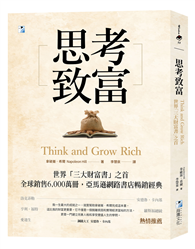Akhlesh Lakhtakia received the BTech (1979) and DSc (2006) degrees from the Banaras Hindu University and the MS (1981) and PhD (1983) degrees from the University of Utah. In 1983 he joined the Department of Engineering Science and Mechanics at The Pennsylvania State University as a post-doctoral research scholar, where he became a Distinguished Professor in 2003, the Charles Godfrey Binder Professor in 2006, and the Evan Pugh University Professor of Engineering Science and Mechanics in 2018. His current research interests include electromagnetic scattering, surface multiplasmonics, bioreplication, forensic science, solar energy, sculptured thin films, and mimumes. He has been elected a Fellow of Optical Society of America (1992), SPIE-The International Society for Optical Engineering (1996), Institute of Physics (UK) (1996), American Association for the Advancement of Science (2010), American Physical Society (2012), Institute of Electrical and Electronics Engineers (2016), Royal Society of Chemistry (2016), and Royal Society of Arts (2017). He has been designated a Distinguished Alumnus of both of his almae matres at the highest level. Awards at Penn State include: Outstanding Research Award (1996), Outstanding Advising Award (2005), Premier Research Award (2008), and Outstanding Teaching Award (2016), and the Faculty Scholar Medal (2005). He received the 2010 Technical Achievement Award from SPIE, the 2016 Walston Chubb Award for Innovation, the 2022 Smart Structures and Materials Lifetime Achievement Award, and the 2022 IEEE Antennas and Propagation Society Distinguished Achievement Award. He is presently a Sigma Xi Distinguished Lecturer (2022-24) and a Jefferson Science Fellow at the US State Department (2022-23).
Dr. Cynthia Furse is the Associate Vice President for Research at the University of Utah and Professor in the Electrical and Computer Engineering Department. Dr. Furse is a Fellow of the IEEE and the National Academy of Inventors. Her technological innovations and 14 patents include development of a system to locate intermittent electrical faults on aging aircraft wiring, with which she founded a successful spin off company, LiveWire Innovation. She is also a pioneering researcher in the development of telemetry antennas for medical implants, and fast methods for predicting the statistical variation in bioelectromagnetic applications. Dr. Furse teaches circuit design, electromagnetics, wireless communication, computational electromagnetics, microwave engineering, and antenna design and is currently a leader in the flipped classroom teaching method. She works to interest young students, including women and minorities, in engineering and routinely volunteers in Utah’s K-12 schools. She has helped organize the Society of Women Engineers Girl Scout Night, Meet an Inventor Night, and College of Engineering High School Summer Camp. She has received numerous teaching and research awards including the 2009 IEEE Harriett B. Rigas Medal for Excellence in Teaching.
Tom G. Mackay is a Professor in the School of Mathematics at the University of Edinburgh and also an adjunct professor in the Department of Engineering Science and Mechanics at The Pennsylvania State University. He graduated from the Universities of Edinburgh, Glasgow, and Strathclyde. His research has been supported by awards from the Carnegie Trust for The Universities of Scotland, Engineering and Physical Sciences Research Council, Nuffield Foundation, Royal Academy of Engineering/Leverhulme Trust, and Royal Society of Edinburgh/Scottish Executive. He is a Fellow of the Institute of Physics (UK) and SPIE-The International Society for Optics and Photonics. His current research interests include homogenization, complex materials, and surface waves.











